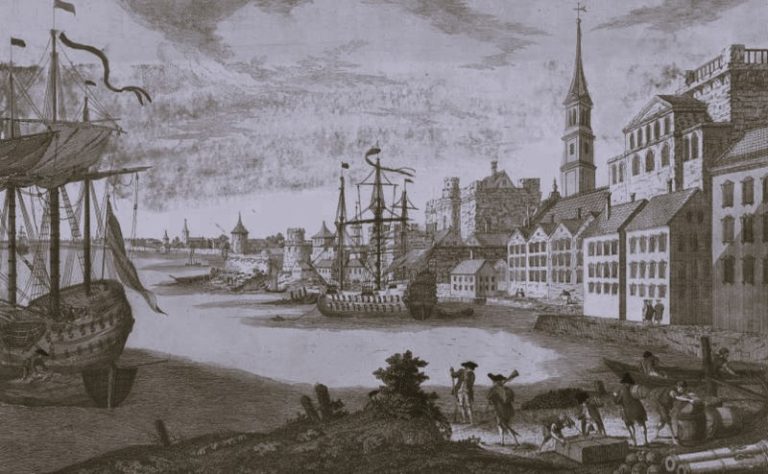
In the 19th century, more people were reading more publications than ever before. This explains how technological, social and educational change made this possible.

By Dr. Matthew Taunton
Senior Lecturer
School of Literature, Drama and Creative Writing
University of East Anglia
Introduction

The 19th century saw a massive expansion of the printed word. The sheer volume and diversity of printed matter was unprecedented: from moral and instructional works to crime novels and Gothic tales; from intellectual periodicals to domestic magazines; from etiquette manuals to cookery books. In addition, these works were reaching broader audiences than ever before, from across the social scale. This expansion can be attributed to two key factors. The first is the range of (broadly speaking) technological developments that increased the capacity for the supply of print: the technological improvements in printing itself and in paper production; and the new distribution networks enabled by improved roads and then, crucially, the advent of the railway. The second factor is the set of social and educational changes that increased the demand for printed matter: rising literacy rates, particularly among the middle and working classes, created a new mass market for printed material of various kinds.
Production

The printing press already had a long history: it was invented in Germany by Joannes Gutenberg around 1440, and brought to England by William Caxton in the 1470s. Yet the basic technology of printing remained fundamentally the same up to the end of the 18th century, requiring two men to manually operate a wooden screw press, producing about 200 impressions an hour. The 19th century was the period in which this process was mechanised, automated, and made many times faster.
A key moment in the development of mass circulation newspapers was the development of the steam-powered rotary press, adopted by the Times in 1814. The new presses were capable of printing 1000 sheets per hour – around five times the number produced by the machines they replaced. The editor, John Walter, had the machines installed secretly at night, so that when his printers reported for duty the next morning the majority of them found that they were out of work; their jobs now completely obsolete. The Times went from a circulation of 5,000 a day in 1815 to around 50,000 in the middle of the century. This was not caused solely by the rotary steam press, but neither could it have happened without it.
Later developments enhanced this effect: the Applegath cylinder machine (exhibited at the Great Exhibition in 1851) achieved 5,000 impressions per hour, and the Hoe press, an import from the United States, was capable of 20,000 impressions per hour. Increases in the speed and efficiency of paper manufacture in this period brought down the cost of printed material both for the manufacturer and the consumer. In 1896, the Daily Mail – ‘The Busy Man’s Daily Journal’ – was launched at the cost of only half a penny, and by 1900 it was selling nearly 1,000,000 copies a day.[1]
Distribution

If print production was revolutionised in these years, then so was its distribution. The advent of the steam railway meant that for the first time newspapers and periodicals could be distributed across the country on a daily basis. Other innovations were made possible by the rapidly changing nature of Victorian society. Circulating libraries, which lent books in return for an annual subscription fee, had existed since the 17th century, but became much more important in the 19th. Mudie’s Select Library opened in 1842, and made the Victorian triple-decker novel accessible to a wider public, with 25,000 subscribers by 1890.

As well as accelerating the distribution of printed material, the railways also offered new spaces in which to read. Mudie’s main rival W H Smith took advantage of this with an extensive network of railway bookstalls. Smith’s had a near monopoly over these, making it possible to borrow a book from Euston, for example, and return it at Manchester. Smith’s had 15,000 subscribers by 1894.

Mudie’s and Smith’s shared typically Victorian concerns about the moral dangers of the printed word, especially where the lower classes were concerned. The quality control that they exercised—which was as much moral as aesthetic, preferring ‘improving’ works to sensational ones – contributed to the rise to prominence of ethically serious writers such as George Eliot, Anthony Trollope or Elizabeth Gaskell.[2]
Literacy

Over the course of the 19th century, books and periodicals became increasingly abundant, while also becoming progressively cheaper and easier to access. These changes went hand in hand with an unprecedented explosion in mass-literacy. Liberal campaigners, influenced by the utilitarianism of Jeremy Bentham, began to make the case for state provision of schooling for the poor in the early 19th century. One of the key arguments they used was that an educated working class was less likely to be a revolutionary one. ‘Education’ as it was then understood was not concerned with encouraging independent critical faculties: widening literacy, combined with the provision of suitably improving reading matter, would help to instil in the working class a sense of moral responsibility and religious integrity.
After the Reform Bill of 1832, access to schooling was progressively expanded for the working classes. These efforts were consolidated in 1870 with the passage of the Forster Act, which dictated that government was ultimately responsible for providing elementary education to those who could not otherwise access it. Census data can scarcely tell us much about the nature or quality of the population’s encounters with the printed word, but they nevertheless show a rise in male literacy from 69.3 per cent in 1851 to 97.2 per cent in 1900, and an even more striking growth in female literacy, from 54.8 per cent to 96.8 per cent over the same period.[3] By the end of the century, almost everyone was potentially a reader of print – but who read what, and how, are more complicated questions. For example, the story is more complicated than simply saying that the working class was now increasingly literate and therefore had started to buy and read novels. There were complex social changes that affected the middle classes too, such as the creation of structured leisure time and the rise of commuting, creating more and different opportunities to sit (or stand) and read a book.[4]
New Formats, New Genres

In this period, for some of the reasons outlined above, the novel established itself as the dominant literary form. But the reality is that the metagenre of the novel encompassed a variety of formats. Novels were serialised in periodicals, and published (like most of Dickens‘s works) in monthly stand-alone parts. So-called ‘penny dreadfuls’ appeared weekly, costing a penny and providing scurrilous, sensational entertainment for working-class audiences. Novels appeared in the classic three-volume form of the ‘triple-decker’ (ideal for the circulating libraries), but also as affordable single-volume ‘yellowbacks’, starting in the mid 19th century, which were bound in boards, and cost between a shilling and two shillings and sixpence. The 1860s saw a paperback revolution, with even cheaper results: George Routledge’s series of sixpenny novels was launched in 1867, and prices continued to decrease as the century went on.
On the one hand, these new cheaper formats were very flexible. They could serve as cheap reprints of serious novels that had been previously published as triple-deckers, or equally as first editions of more sensational material aimed at a lower-middle-class or working-class readership. By the 1880s they played an important role in the late-Victorian romance revival, which saw writers such as Robert Louis Stevenson, H G Wells, and H Rider Haggard finding popular success with adventure stories, Gothic tales, and scientific romances, generally aimed at boys. Such classics as Treasure Island, The Time Machine, and Strange Case of Dr Jekyll and Mr Hyde were thus partly the product of the changes in the production, distribution and consumption of print that have been described in this article.
Notes
- Matthew Taunton, ‘Production’ and Kery Chez ‘Daily Mail”, in The Dictionary of Nineteenth-Century Journalism, ed. by Laurel Brake and Marysa Demoor (London: British Library, 2010).
- Richard D. Altick, The English Common Reader: A Social History of the Mass Reading Public, 1800–1900, 2nd edn (Chicago: Chicago University Press, 2nd edn. 1998) passim.
- Altick, The English Common Reader.
- Kate Flint, ‘The Victorian Novel and its Readers’, in The Cambridge Companion to the Victorian Novel, ed. by Deirdre David, 2nd edn (Cambridge: Cambridge University Press, 2012) pp. 13–35 and The Woman Reader 1837–1914 (Oxford: Clarendon Press, 1993).
Originally published by the British Library, 05.15.2014, under the terms of a Creative Commons Attribution 4.0 International license.







